Abstract
Laterally connected vascular bundles in the nodes of sugarcane (Saccharum species cv. Pindar) stalks allow a rapid redistribution of water across the stalk should the vascular continuity be partly disrupted. Tritiated water supplied to the roots exchanged rapidly between the xylem and storage tissue so that net movement up the stalk was slow. The half-time for exchange in a labeled stalk was about 4 hours so that the entire water content of a sugarcane stalk can turn over at least once in a single day. No rapid flux of sugar between xylem and phloem or xylem and storage tissue was detected. Functional xylem contained only low sugar concentrations: less than 0.3% w/v in the stalk and less than 0.02% w/v in the leaf. Previous reports of high sugar levels (9% w/v) in sugarcane stalk xylem reflect some degree of xylem blockage followed by a slow equilibration with free space sugars in the storage tissue.
Full text
PDF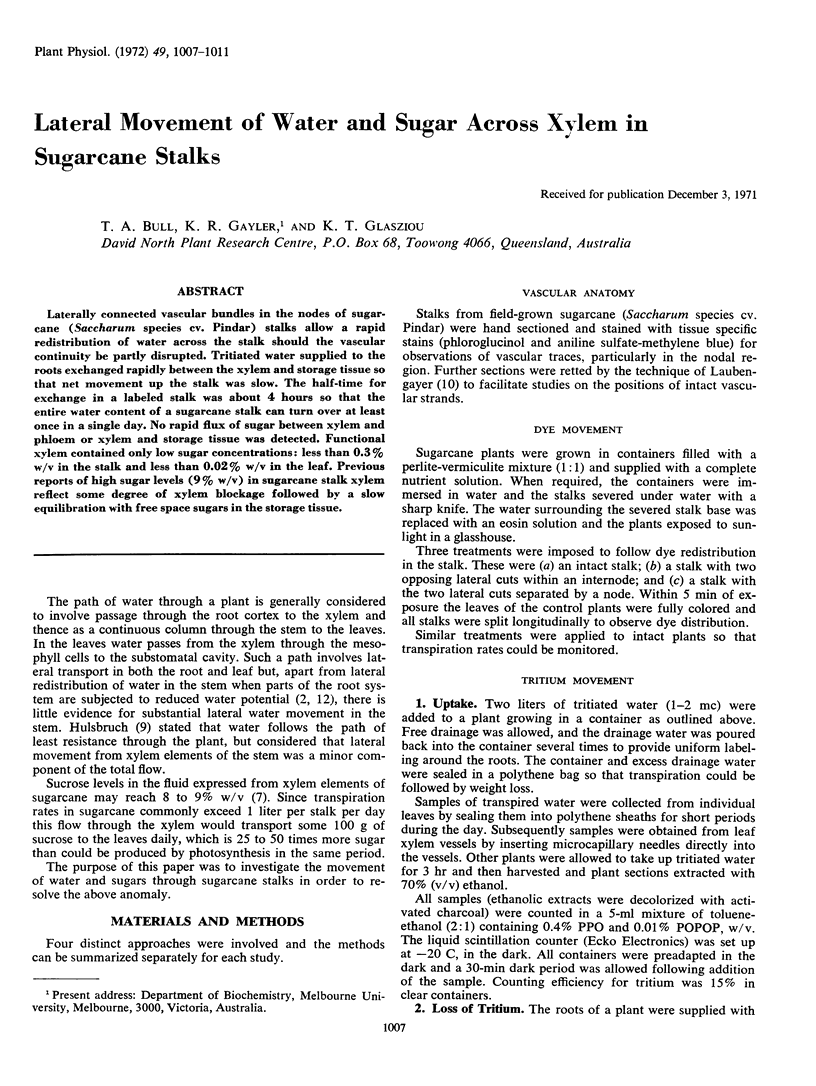
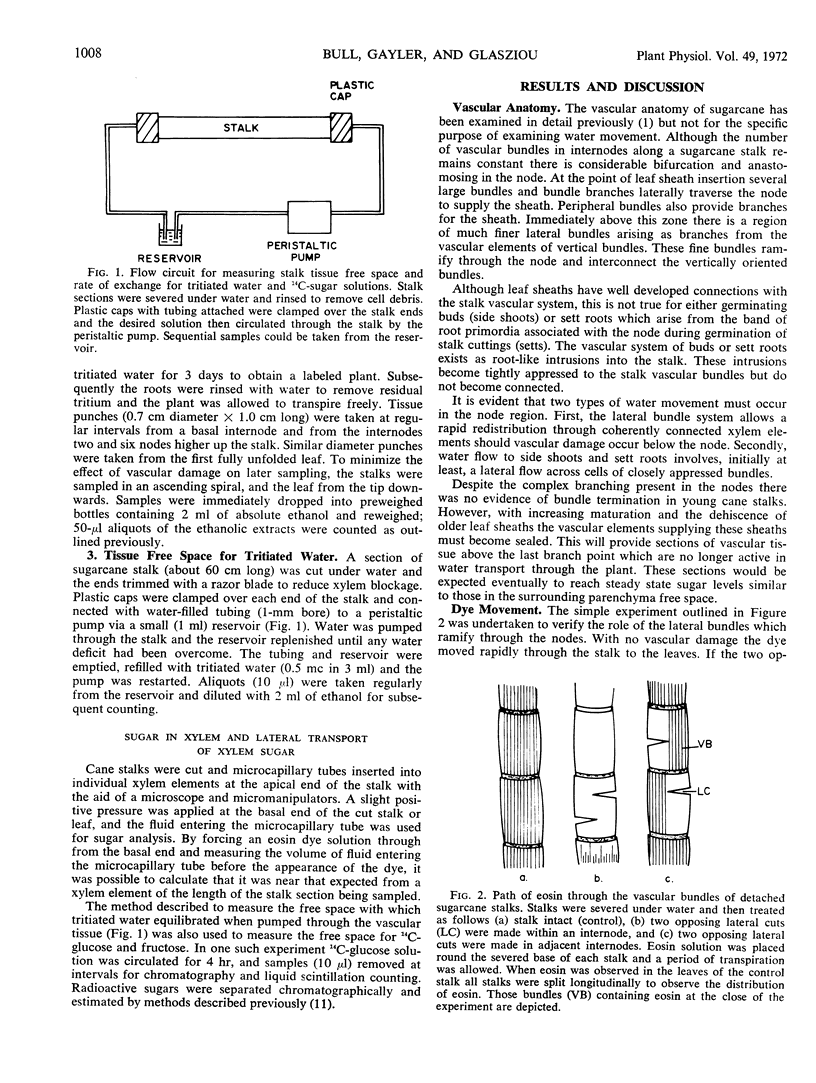
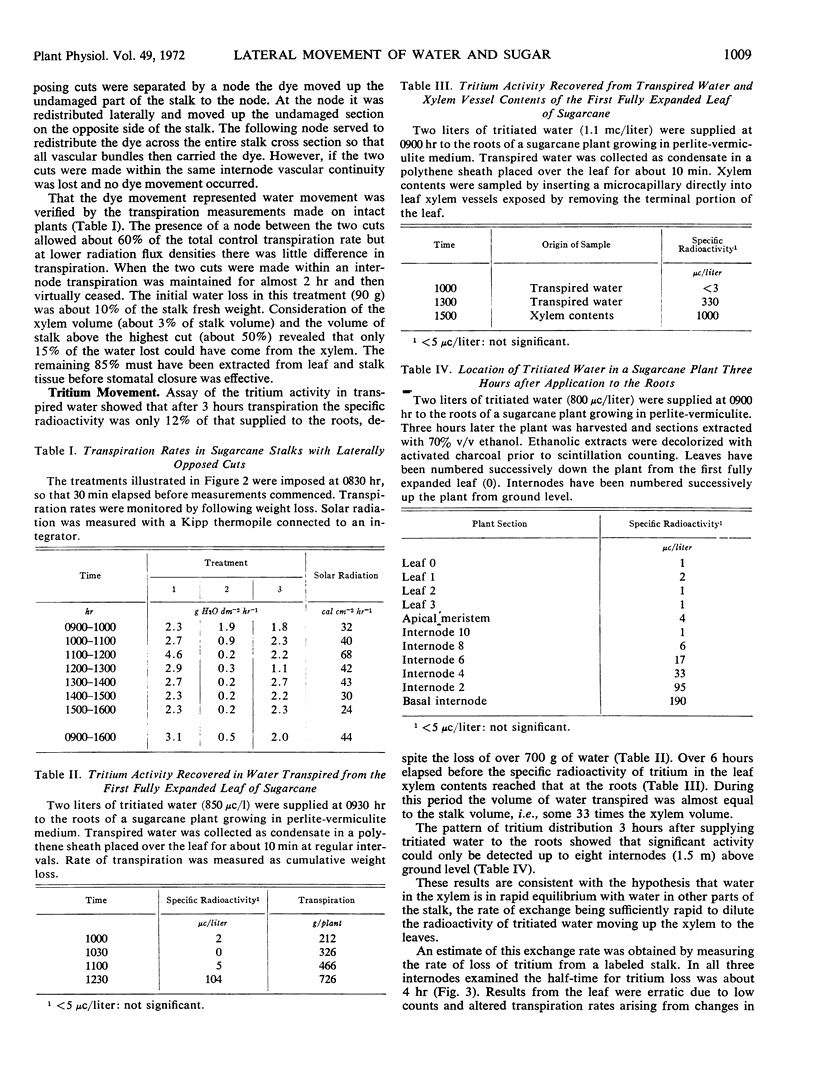
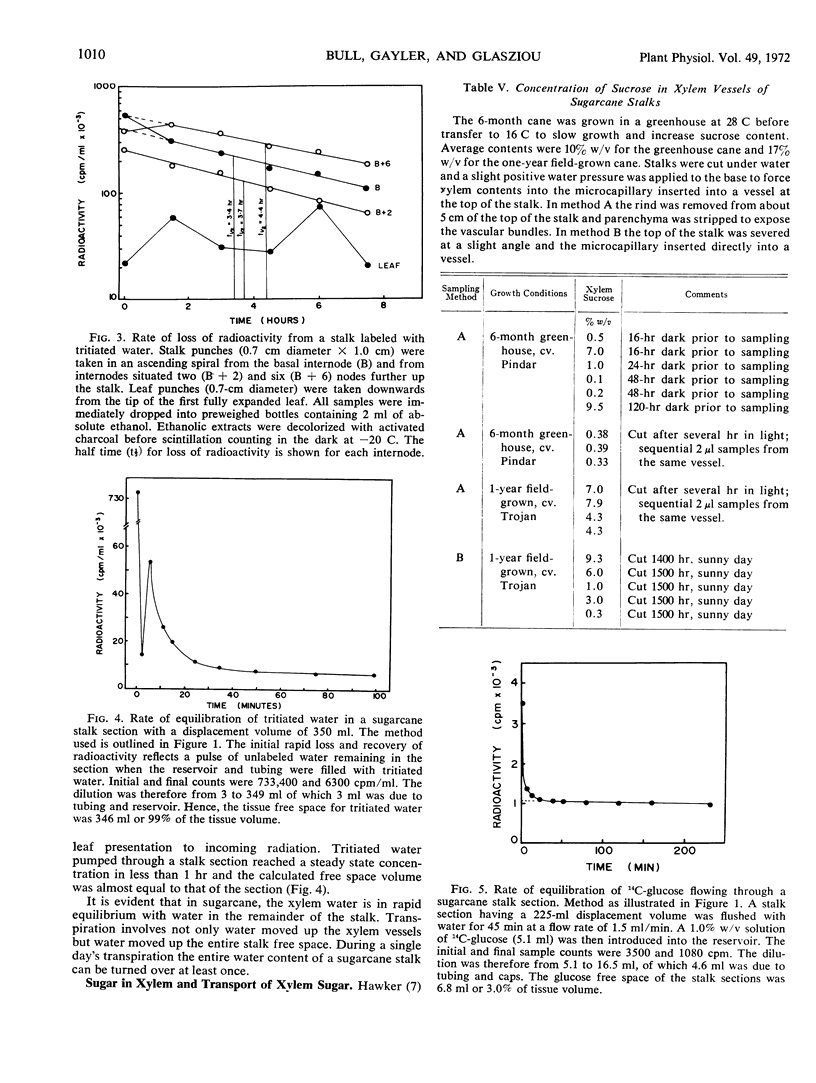
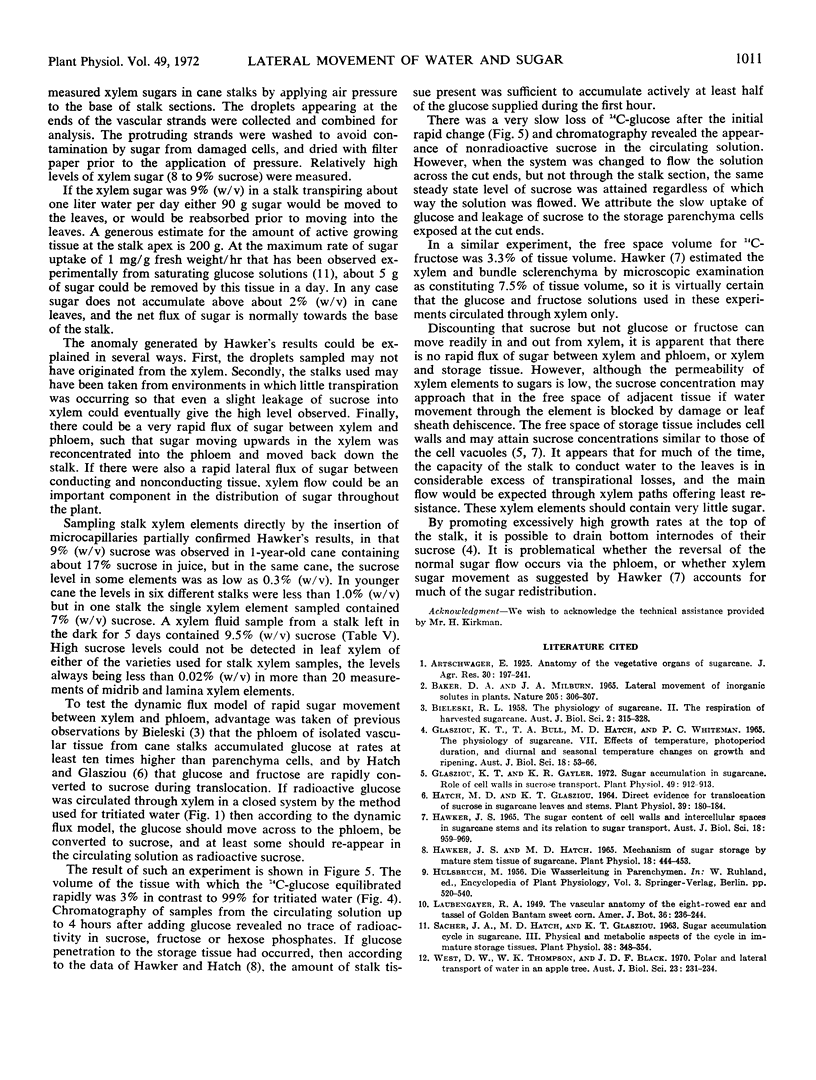
Selected References
These references are in PubMed. This may not be the complete list of references from this article.
- Glasziou K. T., Gayler K. R. Sugar accumulation in sugarcane: role of cell walls in sucrose transport. Plant Physiol. 1972 Jun;49(6):912–913. doi: 10.1104/pp.49.6.912. [DOI] [PMC free article] [PubMed] [Google Scholar]
- Hatch M. D., Glasziou K. T. Direct Evidence for Translocation of Sucrose in Sugarcane Leaves and Stems. Plant Physiol. 1964 Mar;39(2):180–184. doi: 10.1104/pp.39.2.180. [DOI] [PMC free article] [PubMed] [Google Scholar]
- Sacher J. A., Hatch M. D., Glasziou K. T. Sugar Accumulation Cycle in Sugar Cane. III. Physical & Metabolic Aspects of Cycle in Immature Storage Tissues. Plant Physiol. 1963 May;38(3):348–354. doi: 10.1104/pp.38.3.348. [DOI] [PMC free article] [PubMed] [Google Scholar]


